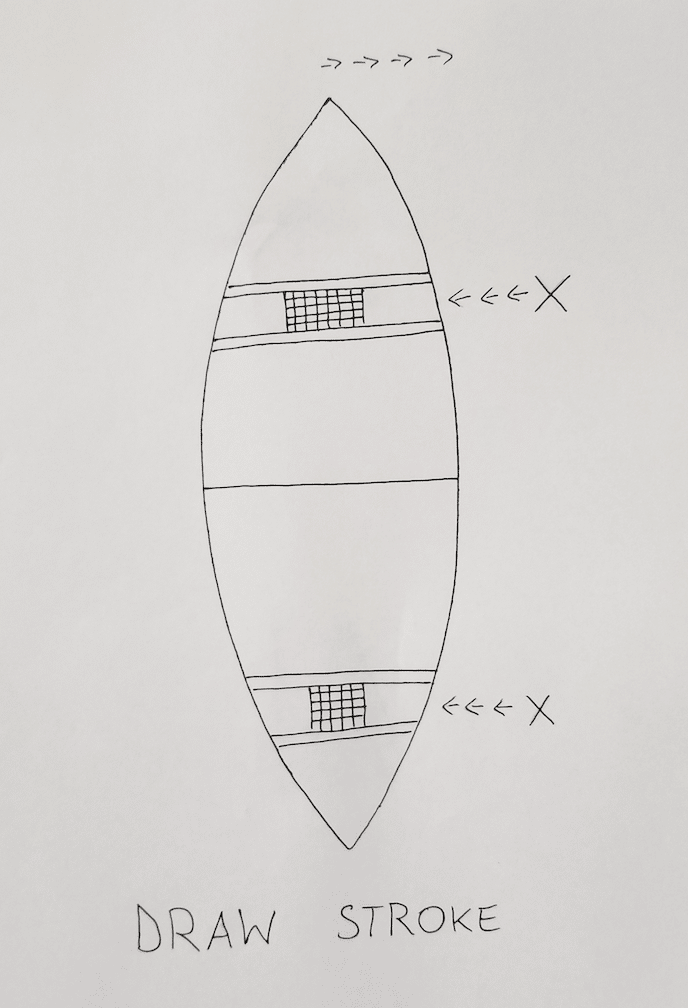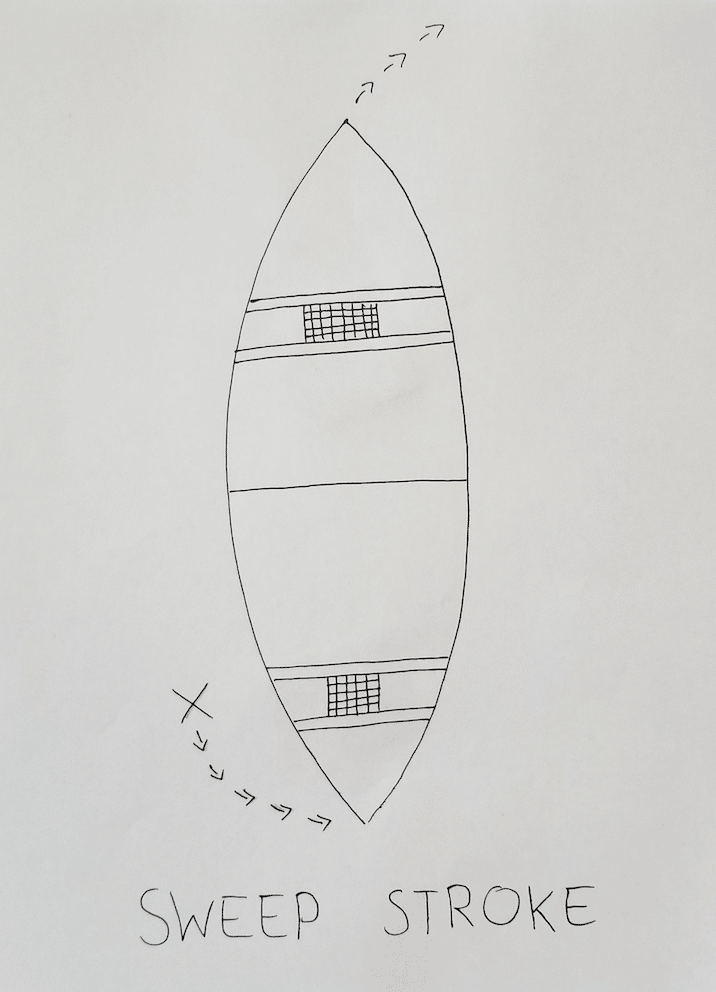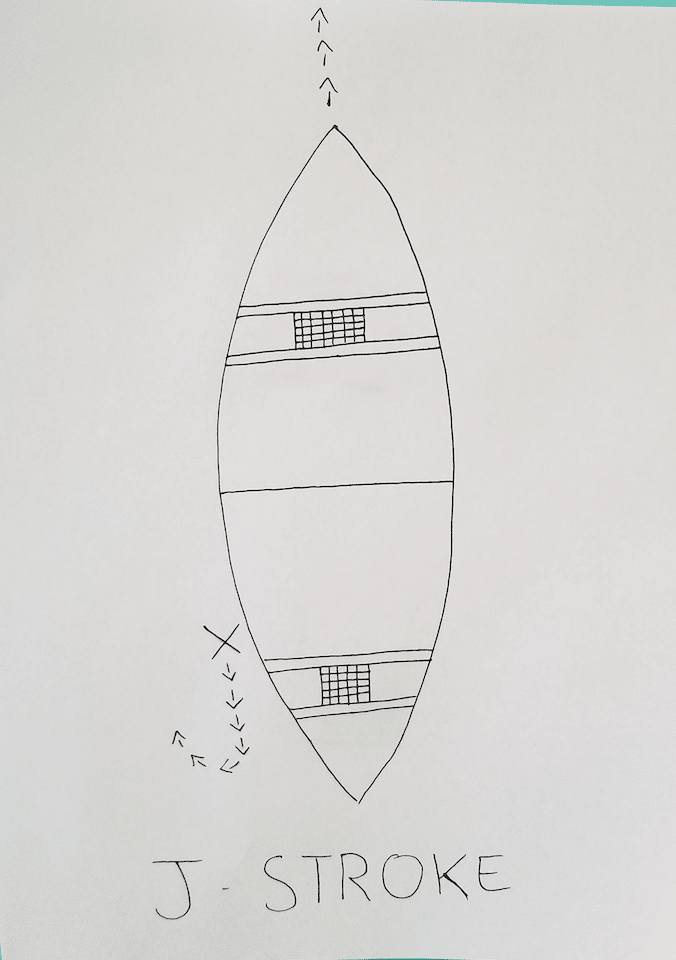Most people learn to canoe when they are a kid by paddling with a friend or sibling and just figuring it out. Maybe they borrow a family member’s boat to paddle on a pond, or they try it out at a summer camp. Either way, there’s typically some flailing and flipping involved in childhood canoeing attempts. As an adult, flailing and flipping sounds a lot less fun!
Whether you’re about to go canoeing for the first time or you’re just looking to improve your canoeing ability, it’s important to know a few basic strokes and information about how to paddle. Learning how to paddle a canoe correctly will make your paddling experience a lot more fun. If you know a few basic strokes, you’re less likely to ping-pong off of river banks and more likely to float in a straight line.
In This Article
Why do you need to know basic paddle strokes?
Canoeing is a little more difficult than it seems. When newbies jump into a canoe together and set off on their adventure, they end up struggling a bit. Unlike paddling alone in a kayak, you have to work together with your boat partner to steer a tandem canoe. If you and your boat partner aren’t on the same page, and neither of you really knows what you’re doing, you’ll spend a lot of time spinning in circles.
Remember that casual paddling is about having fun with your boat partner and enjoying your time on the water. Unless you’re going on long-distance paddles and overnight paddling trips, your speed shouldn’t matter very much. If you’re trying out canoeing for the first time (or the first time since you were a kid), plan a short trip. Your paddle strokes probably won’t be perfect, so you and your boat partner might tire out faster than you’d think.
Once you master the basics of how to paddle a canoe, you’re more likely to have fun on your canoeing trips. Even if you’re just going on a little one-hour paddle in a local park, knowing the basic strokes helps you have a lot more fun. You’ll be able to maneuver into more nooks and crannies and avoid obstacles that you don’t want to hit.
Moving water vs. Flat water
There are a couple of pros and cons to paddling on moving water or flat water. Simply put, moving water is any waterway with a current or notable tidal pull, and flat water doesn’t move. So rivers, streams, and coastal waterways are usually moving water. Ponds, lakes, and bayous are usually flat water.
You’ll clearly move faster paddling downstream than you would paddling on a pond. However, trying to paddle on moving water becomes a lot more difficult if you don’t know what you’re doing. Imagine being in a moving car without knowing how to use the steering wheel. You’re going to bump into more things, and the result of those bumps depends on how fast you’re traveling.
You’ll travel a lot more slowly on flat water, so it won’t matter too much if you bump into things. In fact, you’d have to accidentally maneuver yourself over to the obstacles in order to bump into them. So if you’re completely new to paddling, practice your basic strokes on flat water before moving to a river or stream.
How paddling works
It’s important to note that there’s a big difference between paddling in the bow (front) of the boat and paddling in the stern (back) of the boat. Some of the strokes can be done from either position, but a few only work correctly when performed in the stern of the boat. Single-person canoes are pretty uncommon, so this guide will focus on tandem (two-person) canoes.
This section might be a little boring for folks who just want to get out and paddle. We totally get that! But understanding why the paddle strokes work the way they do will help you learn how to paddle correctly. If you’re more of a learn-by-doing type of person, feel free to skip this section and just go out and try the strokes until you get them right.
Most canoes are designed to be symmetrical — meaning that the bow and the stern are the same shape and distance from the center of the boat (although they do make square stern canoes where you can attach a motor). So the very center of the boat is the pivot point that the bow and stern spin around.
The bow and stern seats are purposefully placed at different distances from their ends of the boat. The stern seat is a little closer to the back of the boat, and the bow seat is a little further away from the front of the boat. So you should be able to sit pretty comfortably in the bow of the boat facing forward, but you would have very little leg room if you sat in the stern backward.
Using a car analogy, the bow paddler is kind of like the motor and the stern paddler is kind of like the steering wheel. The bow paddler can steer a little bit too, but not as easily as the stern paddler. So, the bow paddler will mainly be paddling forward to keep the momentum going, and the stern paddler will use certain steering strokes to pivot the boat in the correct direction.
With each paddle stroke, the ends of the boat pivot around the center point of the boat. Your goal is to make the boat pivot the way you want it to so that it stays on course.
The basic paddling strokes
There are a few basic paddling strokes that every canoer should know whether you’ll be paddling in the bow or the stern. Knowing these strokes will help you steer the boat in the right direction and make small adjustments that will keep you from running into obstacles and river banks.
Don’t expect to master all of the basic strokes in one day!
It takes most people several attempts to get the strokes down and really know how to do them well. So long as you don’t expect your paddling to be perfect immediately, you’ll be fine. Just keep practicing the basic strokes until you get them right. Once you start doing them correctly, you’ll find that it takes less effort to steer your boat and you’ll go further faster.
Basic strokes that work in the bow and the stern
Forward Stroke
The forward stroke is the most basic canoe stroke. This is the one that you’ve either done before if you’ve gone canoeing or you’ve at least seen in movies. The forward stroke propels the boat forward.

Steps:
- Place the blade of the paddle in the water in front of you. The blade should be perpendicular to the boat.
- Pull the paddle straight back toward the stern of the boat.
This stroke works best when the bow and stern paddlers are paddling on opposite sides of the boat. Paddling on opposite sides helps to balance the stroke out well. If both paddlers are paddling on the same side, the boat will start to veer the opposite way.
Ex: If you’re both paddling forward on the left, the boat will turn to the right.
In most flat water canoeing situations, the bow paddler will almost exclusively use the forward stroke. The stern paddler will use a combination of the forward stroke and other steering strokes.
Backward Stroke
The backward stroke is just the reverse of the forward stroke. It is used to make the boat go backward or to stop forward momentum (AKA hit the brakes). If you’re about to crash into something you don’t want to hit, paddle backward. If you’ve already hit something and now you need to get back out of it, paddle backward.

Steps:
- Place the blade of the paddle in the water behind you. The blade should be perpendicular to the boat.
- Push the paddle forward toward the bow of the boat.
Communicate with your boat partner to ensure that you’re paddling on the correct side of the boat to accomplish your goal. Since you don’t typically use this stroke unless you need to get out of a jam, you’ll want to be on the same page when using it.
Another reason to use a backward stroke is combining it with a forward stroke to spin the boat. If you’re both paddling backward, the boat will go backward. However, if one of you paddles forward and the other paddles backward, the boat will spin in a circle. Try it out when you first get on the water to get a feel for spinning and maneuvering.
Draw
The draw stroke is used to move the boat sideways. If you’re just paddling on a pond or very slow-moving water, you shouldn’t need to use this stroke often. It’s primarily used to quickly avoid an object that you’re about to hit or to get closer to something that you want to reach.

Steps:
- Place the blade of the paddle in the water as far out at you can reach. The blade should be parallel to the boat, directly next to you (not in front or behind you).
- Pull the paddle toward you.
Basic strokes that only work in the stern
Pry
A pry is a steering stroke that’s used to keep the boat on course if it starts to veer. You will use a pry when you want to turn the boat toward the same side as you’re paddling.
Ex: If you use a pry stroke on the left, the boat will turn left.

Steps:
- Place the blade of the paddle in the water as far behind you as you can. The blade should be parallel to the boat.
- Swing the blade forward to a 45° angle. You can brace the shaft of the paddle against the boat if you need to.
Doing a pry stroke should not be difficult. It’s a pretty small movement that can have a big impact on your boat’s direction. Just be sure not to bring your paddle too far forward. Bringing it too far forward can slow you down.
Sweep
A sweep is a steering stroke that’s used to keep the boat on course if it starts to veer. You will use a sweep when you want to turn the boat toward the opposite side as you’re paddling.
Ex: If you use a sweep stroke on the left, the boat will turn right.

Steps:
- Place the blade of the paddle in the water as far out at you can reach. The blade should be perpendicular to the boat, directly next to you.
- Swing the blade backwards toward the stern of the boat. It’s OK to actually touch the stern of the boat if you can reach that far.
- This should be a full 90° motion.
J-Stroke
Learning how to correctly do a J-stroke will make your life a lot easier. It’s essentially a combination of a forward stroke and a pry. The J-stroke allows you to keep the momentum of a forward stroke without getting off course. Each stroke includes a tiny corrective action, so your boat is more likely to stay on track.

Steps:
- Place the blade of the paddle in the water in front of you. The blade should be perpendicular to the boat.
- Pull the paddle straight back toward the stern of the boat.
- When the blade is behind you, turn it so that it is parallel to the boat.
- Swing the blade forward to a 45° angle. You can brace the shaft of the paddle against the boat if you need to.
If you know how to do a J-stroke correctly, then you know how to paddle a canoe well enough for any easy to moderate canoeing adventure. It’s the most advanced of the basic strokes, and it’s the most useful for steering.
Paddling by yourself
If you are paddling by yourself in a single-person canoe, you can use any of these strokes. Single-person canoes are designed for the paddler to sit or kneel in the middle of the boat, so you won’t really be in the bow or the stern. However, it’s unlikely that you’ll be learning to paddle in a sign-person canoe.
It’s more likely that you’ll be paddling with someone who isn’t very good at paddling and you’ll need to handle most of the work. Though you might not really be by yourself, it’s a lot like being by yourself. This happens a lot if you go paddling with children or if you go paddling with a friend whose confidence level exceeds their ability. In either of those situations, try to make sure you’re in the stern of the boat so you can better control the steering.
If you’re actually paddling by yourself in a two-person canoe, sit backwards in the bow seat. This will put you closer to the center of the boat than you would be in the stern seat. So it’s kind of like paddling a giant single-person canoe. You’ll get a lot more leverage from each stroke and will have more control of your turns.


